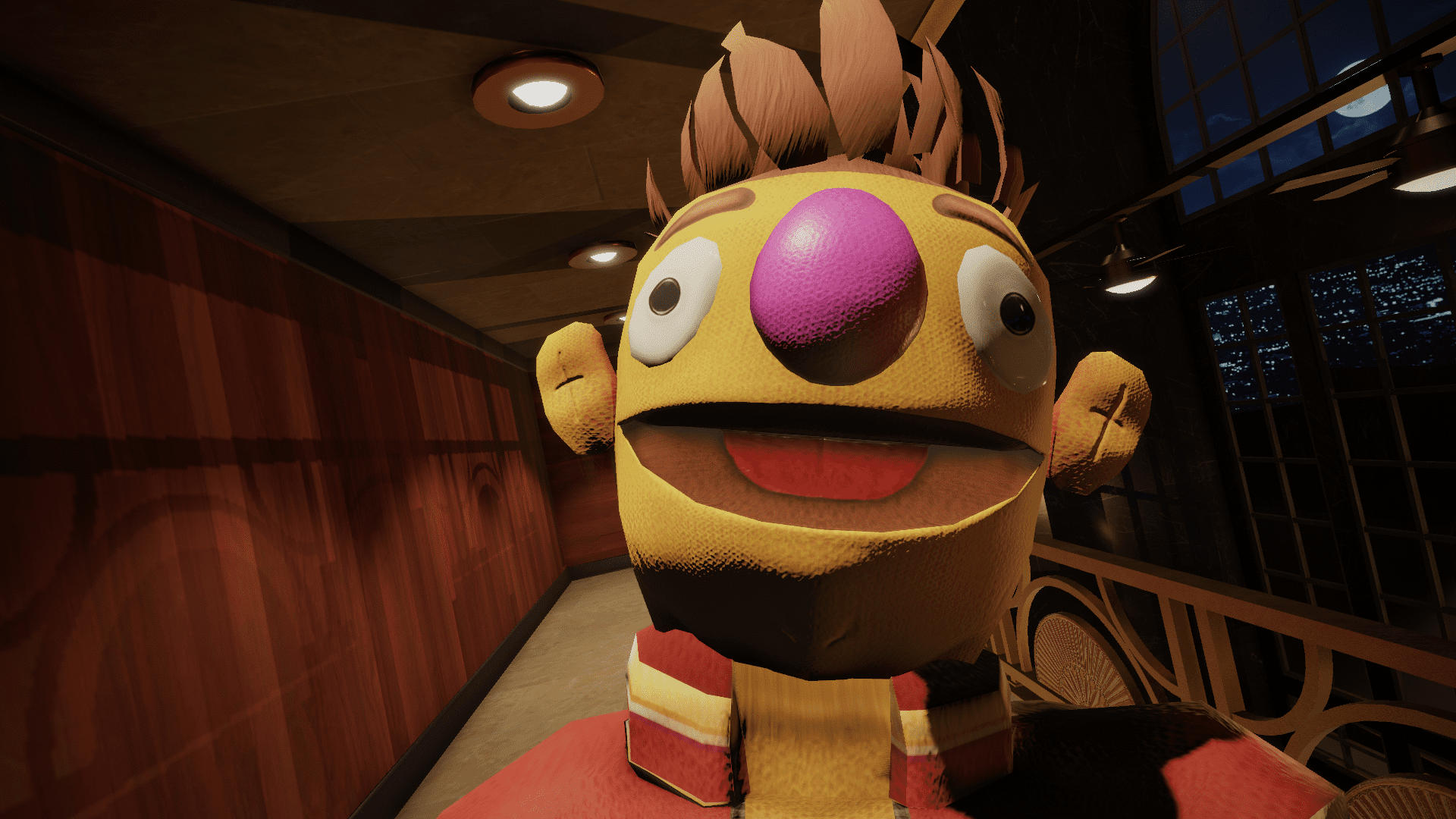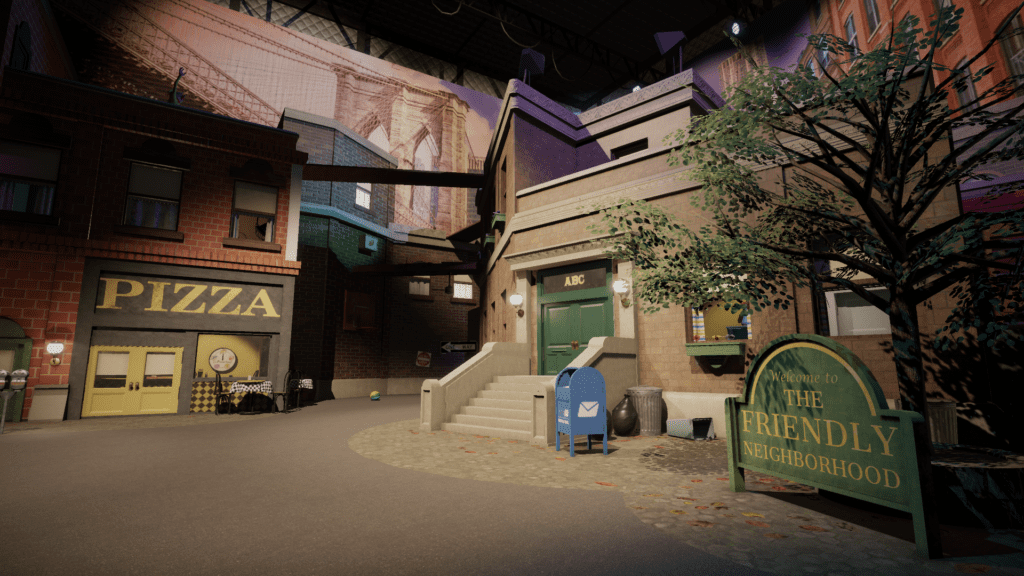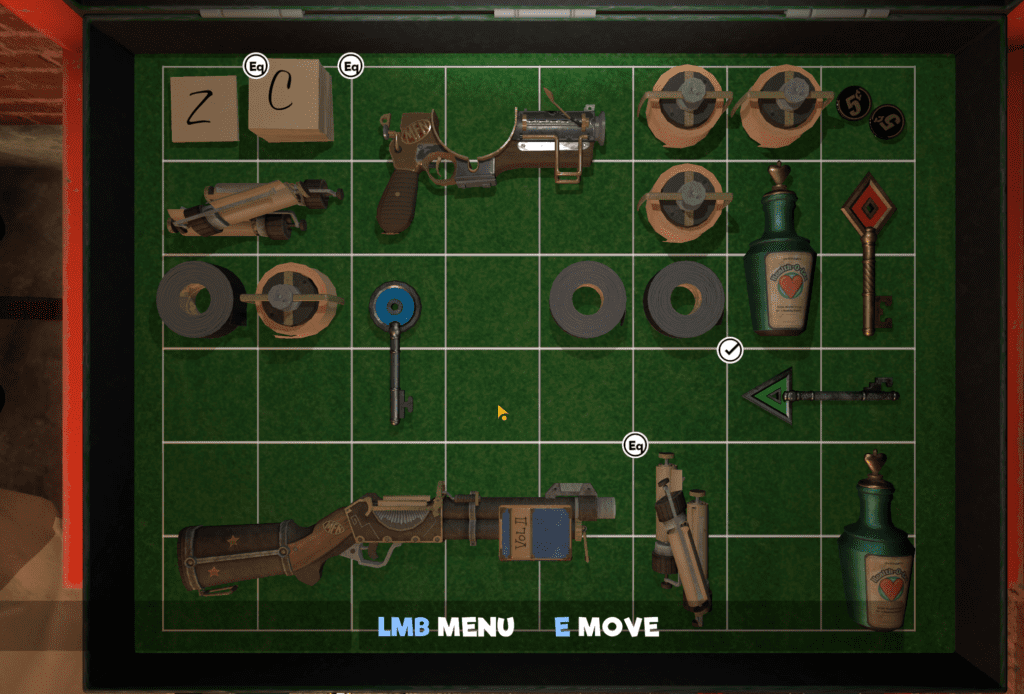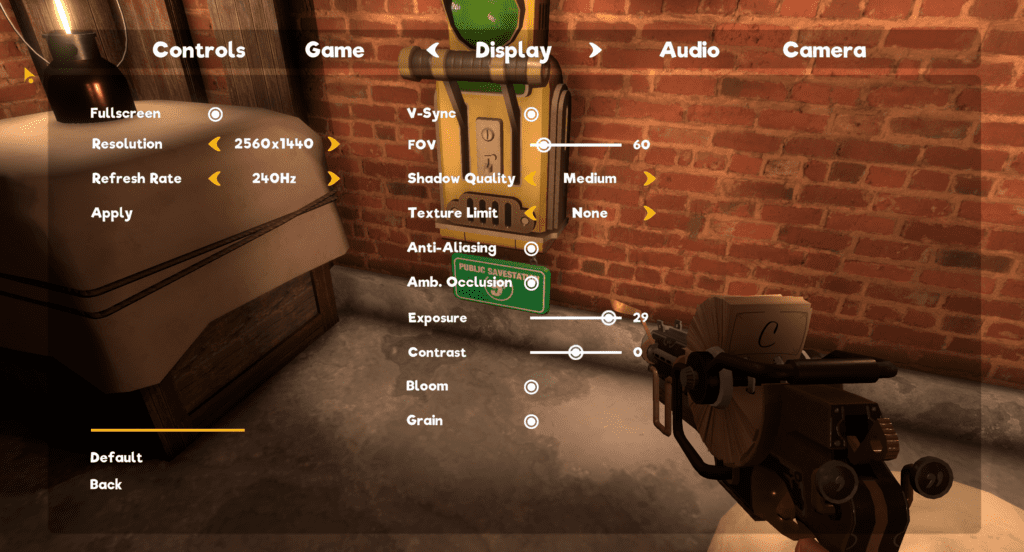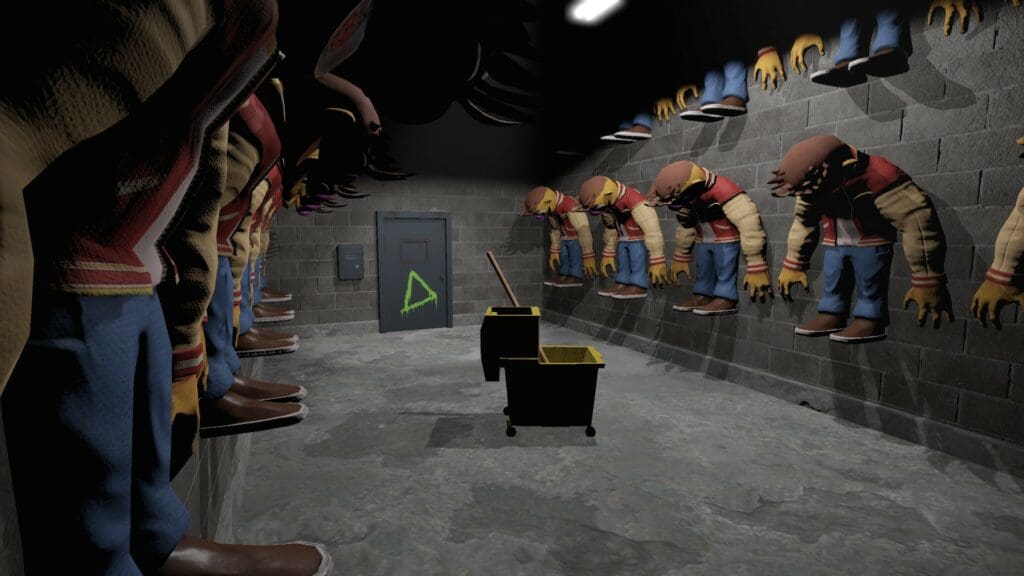When I first heard of My Friendly Neighborhood, I thought to myself, “What is so scary about puppets?” After playing through the first demo, I soon realized what can be scary about them within the situation; these are no ordinary puppets, these puppets are like Terminator zombies. Even when you think they are all dead, one wrong turn and you can catch those puppet hands. Before I dive too deep into this review, I will state that My Friendly Neighborhood follows the 90s and early 2000s style of survival shooters; there is no auto-save to help you regain ground. You have to think about your actions and how to survive the experience. Now let’s dive into the My Friendly Neighborhood (MFN) review.
Story
After two years of previewing the game at PAX East, we finally got our hands on My Friendly Neighborhood; the reason I use “we” here is there are multiple of us at the site who have been eagerly awaiting the game’s release. The game starts off with a serviceman, Gordon, heading to the MFN Studio to stop an unauthorized broadcast that is disrupting the signal of other channels. Upon arriving at the facility, our character realizes that the elevator shaft is junked up and we will have to find an alternate path.
Upon leaving the lobby, our character sees a figure moving in the shadows and decides to follow it. This leads us to where we learn the fundamentals of MFN but also introduces us to our creepy puppet enemies. Now, even though it is supposed to be a survival horror game, the atmosphere almost feels too cheery. Now, this isn’t a horrible thing, but it does take away from the jump scares. Within the game, there are these moments that kill the suspense entirely; instead of giving players a heartfelt moment, the game should have chosen one direction and stuck with it. Now, these moments are optional but would have been better left for a new game plus playthrough or one of the cheat mode modifiers.
Although there are some narrative standpoints that we disagree with, MFN’s developers have done a great job with world-building and even character development. Even though we are only with the puppets for a short amount of time, we are able to understand their backstory and experiences through collectibles and voice lines. Some of the voice lines might seem a bit nonsensical, but some do have some meaning that helps point you in the right direction; all you have to do is decipher it.
Gameplay
As previously stated, My Friendly Neighborhood takes an early survival horror approach with how the game is played. MFN does not contain an auto-save system so players need to think about their actions. Instead, players can collect 5-cent coins through their adventures; these coins can be used while resting in the safe room to heal or to save the game. Now, just like in early Resident Evil, Silent Hill, and Dead Space games, the player will need to utilize their saves effectively. The game offers two base difficulties, Normal and Survival; if you are looking for more of a challenge, go with Survival.
The saving factor can be both positive and negative. On one hand, you will have to redo everything that you did since the last save. On the other hand, you should be able to do it all more efficiently. Can it be time-consuming? Yes, but do you want your hand to be held completely? Probably one of the most daunting aspects you will have to deal with is the puppets’ movements. At times, it can seem like you are hitting them properly, just to find out you’ve merely been grazing them and they feel like a Terminator to take down. Plus not all of the puppets move in the same way, so it can be difficult to predict. However, even though it can be difficult, it can still be satisfying once you take them down and tape them up.
Inventory
In MFN, the inventory system plays a prominent role in what the player can or can’t carry; thankfully, in each safe room, there is a toybox (storage chest) for the player to store unnecessary or unused items. Now, storing items can be helpful if you just want to explore and don’t plan on using them right away. Within the inventory, you can move around objects in order to carry more items. The inventory system is a major component of the game and you will have to manage resources.
Weapon Ingenuity
Outside of the system resources management, the player will have to keep track of their ammunition. Ammo in the game can be rather limited and once you run out, you will have to resort to using a wrench to fight off the puppets. Now, there are two things we greatly appreciate that MFN does that other survival horror games didn’t. One, when most puppets are defeated, you can tape them up so that they won’t be future you’s problem; these puppets will remain that way throughout the game. Second, the game does not use traditional weapons. Instead of a standard handgun, players receive a pistol that shoots post-it notes with letters on them at the puppets. Just like the pistol, the shotgun uses typewriter roles as shells to unleash a devastating shot.
Puzzle Solving and a Different but Familiar Approach
Outside of the creativity with weapons, My Friendly Neighborhood takes a similar approach to other Survival Horror games without being a carbon copy. Yes, the game does offer a key system that will unlock select doors, but most of the puzzles within the game have their own unique spin. Most of the puzzles within the game have you searching for an item in order to interact with it. Once you do find the piece, the game won’t continuously hold your hand. In fact, the game leaves much of the exploration to the player by having them find their own direction; on top of that, maps within each area must be found otherwise you can wander around aimlessly. Typically these maps can be found within the area’s safe room.
Going back to puzzles, while playing through the game no puzzle felt identical to another. Each puzzle is explained but the player has to figure out what the clues mean; some of these clues are rather straightforward while others have to be deciphered. Within the game, there is one puzzle that we would love to be able to play on its own outside of the game; without spoiling the story involving it, it is a board game where you have to use cards to move. If you aren’t great with puzzle solving, these puzzles can take a bit to solve, but once you complete them, you will feel satisfied.
Like other games, MFN offers collectibles that can be picked up while exploring. Some of these collectibles are VHS tapes that activate a variety of cheats. These cheats can only be used once the game is completed but add a new layer to the game. Once you beat the base game, new game modes unlock for players seeking a challenge.
Graphics
Playing through My Friendly Neighborhood was a relatively smooth process. Throughout the playthrough, there were only four graphical issues that we noticed that caused an issue and only one was detrimental. The puppets within the game do not move like traditional enemies, so hitting them and finding their hitbox can be a bit frustrating. When first booting up the game, you have to guess where you are shooting until you go into the gameplay menu; in there you can turn on the reticle option making shooting puppets a lot easier.
The second graphical issue came when using the projectors later in the game. This was more of a gameplay issue but still caused a visual bug. At first, the audio played the film of one movie while showing another, then after its loop, it resynchronized. Additionally, later on, the projector system would not allow you to change films; this is either a gameplay issue or a designed gameplay choice but seems odd when one of the reels is found a bit later.
Minor inconveniences/design choices?
The third issue that was encountered was some spaces being so dark/poorly lit that it is difficult to see or navigate. For those instances, I had to mess with the display options until I was able to see what was in the room; then once the room was exited I had to turn them back to their former settings. In these instances, a flashlight would have been helpful even if it was a pocket-sized one.
The final graphical issue we noticed was object permanence/clipping through objects and even that was non-consequential. Certain objects within the map could be walked through despite a visible barrier being shown. Additionally, some enemies once pacified could be walked through or you could hang out inside of them. These offered a more comical situation rather than an issue.
Controls
Despite being told that the game did not have fully integrated controller support, we had no issue playing it with an Xbox controller. Actually, it was fairly responsive. The only problem we faced was the controller disconnecting while playing which was easily solvable by using the keyboard and mouse to get to a safe location. Like other survival horror games, My Friendly Neighborhood uses the traditional control scheme. Most interestingly, on the controller weapons are swapped by using the left and right bumper. Both the controller and PC controls are fairly simple to use; the only problem comes when switching between the two, but that is fairly easily solved.
Audio/SFX
When it comes to My Friendly Neighborhood, you will either love or hate it. Throughout each area, the puppets will talk and say a lot of wild things. Even when restrained, the puppets will continue to talk. For some, this constant dialog or talking can be overwhelming. Personally, I was able to tune it out and in some instances found it comedic because it almost seemed like the puppets were fighting with one another. Outside of the occasional changes in mood, MFN keeps the horror vibes going. Our biggest complaint would have to be that the dogs sounded too cute. Instead of wanting to shoot them, the urge to pet them was high.
If you have issues with sensory overload, you can adjust the volume within the game’s settings. Players can adjust the master volume, SFX, music, ambient noises, narration, and the puppets’ volume. The fact that you can adjust the puppets’ volume for some is a lifesaver because they can be a bit much at times. Now, this could hurt you when entering unfamiliar areas, so make sure to be able to still hear them but be comfortable with hearing them.
Verdict
Although My Friendly Neighborhood‘s story can get off track every once and a while, it still tells a suspenseful tale of a bystander being dragged into a situation they did not bargain for. At times, you will sympathize with the puppets when they aren’t trying to kill you. The more heartfelt moments should have been kept to new game plus or only obtainable through cheat mode. Meanwhile, the game’s inventory system brings back what we either loved or hated in other Survival Horror shooters. The game takes more of a risque approach by making players accountable for their actions and saves rather than providing a soft hand save system. The use of non-traditional weapons to take on the puppets and disable them also makes this game unique.
Players who love survival horror games should definitely give My Friendly Neighborhood a chance. The lack of handholding within the game was a refreshing take that other companies should consider. Honestly, this game has been everything we expected and more. Because of the cheats and different game difficulties, you can play through it multiple times and have a different experience.
If you are a fan of Resident Evil and other Horror games, it is worth it to check out. If you are uncertain that you will like it, there is a demo available on Steam. Personally, we highly recommend My Friendly Neighborhood. It may not be perfect, but it is still a lot of fun and is a refreshing take on the survival horror genre.
A review code for My Friendly Neighborhood was provided for review purposes.

